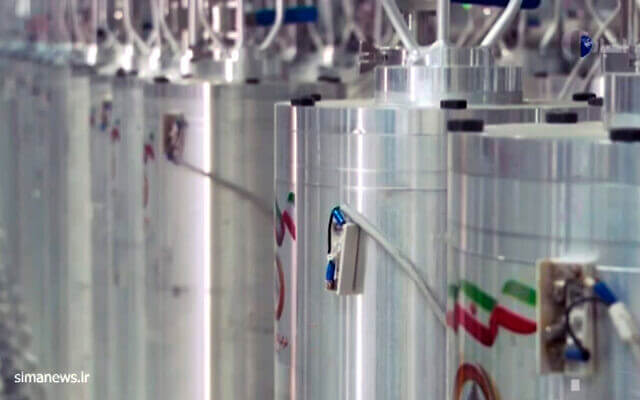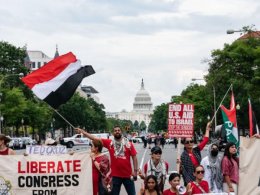Iran has set up a new centrifuge parts workshop underground at its Natanz nuclear facility for better protection, the head of the UN nuclear watchdog agency confirmed on Thursday.
International Atomic Energy Agency Director-General Rafael Grossi said the machines were moved from Karaj, near Tehran, to the new location, which he said was some three floors below ground, possibly to protect it from potential airstrikes.
The workshop produces parts for centrifuges, which are machines used to enrich uranium.
Facility, some 200 miles (322 km) south of the capital Tehran. (IRIB via AP, File)
Iran has set up a new centrifuge parts workshop underground at its Natanz nuclear facility for better protection, the head of the UN nuclear watchdog agency confirmed on Thursday.
International Atomic Energy Agency Director-General Rafael Grossi said the machines were moved from Karaj, near Tehran, to the new location, which he said was some three floors below ground, possibly to protect it from potential airstrikes.
The workshop produces parts for centrifuges, which are machines used to enrich uranium.Top articles on The Times of IsraelRead More
Panic at the airport after American family tries to board plane with souvenir bomb
“They are transferring the centrifuge producing capacity to a place where they feel they are more protected,” Grossi said.
The workshop has been set up in one of the halls of Natanz’s Fuel Enrichment Plant, where Iran has thousands of centrifuges, Grossi said, according to Reuters.
The plant was previously only used for enriching uranium, and not for producing centrifuges.
The workshop produces parts for some of Iran’s most advanced centrifuges, the Reuters report said.
Iran and the IAEA said the workshop was moving to Natanz earlier this month. Thursday’s announcement confirmed that the workshop had been established at the new facility and provided new details about its location.
Iran’s centrifuge facility in Karaj was targeted in what Iran described as a sabotage attack in June. Natanz itself has twice been targeted in sabotage attacks, assaults that Iran has blamed on Israel.
Earlier this month, the Vienna-based IAEA said it installed cameras at the new workshop site in Natanz, several days ahead of Iran’s confirmation of the move.
The machines there will be used to make centrifuge rotor tubes and bellows, crucial parts for the devices that spin at very high speeds to enrich uranium gas.
Talks between Iran and world powers in Vienna to revive the 2015 nuclear deal have stalled for over six weeks, reportedly over Iran’s demand that Washington delist its Islamic Revolutionary Guard Corps from a US terror list.
The 2015 deal gave Iran sanctions relief in exchange for curbs meant to guarantee that Tehran could not develop a nuclear weapon, something it has always denied wanting to do.
The United States unilaterally withdrew from the accord in 2018 under then-US president Donald Trump and reimposed biting economic sanctions, prompting Iran to begin rolling back its own commitments and advancing its nuclear development.
The Vienna talks, which started a year ago, aim to return the US to the nuclear deal, including through the lifting of sanctions on Iran, and to ensure Tehran’s full compliance with its commitments. The US communicates with Iran via intermediaries at the talks.
The White House said Tuesday that Iran’s nuclear breakout time, meaning the period it would need to amass the fissile material needed to build a bomb if it chose to do so, was down to only weeks. The US continues to insist a diplomatic solution is the best path forward.
The nuclear deal had Iran put advanced centrifuges into storage under the watch of the IAEA, while keeping its enrichment at 3.67% purity and its stockpile at only 300 kilograms (661 pounds) of uranium.
As of February 19, the IAEA says Iran’s stockpile of all enriched uranium was nearly 3,200 kilograms (7,055 pounds). Some have been enriched up to 60% purity — a short technical step from weapons-grade levels of 90%. Meanwhile, Iran has stopped the IAEA from accessing some of its surveillance camera footage.
Iran has long insisted that its nuclear program is for peaceful purposes. However, US intelligence agencies and the IAEA believe Iran had an organized military nuclear program up until 2003, while Israel has alleged that Tehran has continued to pursue nuclear weapons since then.










